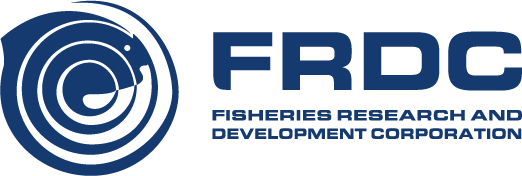Free | 120 hours | Online | October 2024 |
The University of Tasmania is pleased to have partnered with Oysters Australia and Fisheries Research and Development Corporation (FRDC) to develop this shellfish safety regulators course.
The Managing and Regulating food safety risks in Bivalve Shellfish course is designed to provide new regulators or persons wishing to move into this career path with the necessary knowledge required to embark on this employment pathway. The course is comprised of 4 modules and these are structured to cover the following topics:
- Biological factors and legislative framework
- Harvest area classification
- Bacterial contaminants inc. management of sewage, vibrio’s, depuration and wet storage
- Harmful Algal Blooms and their management
On completion of the course, you will have a clear understanding of why bivalve shellfish must be harvested and handled following a highly complex set of requirements to ensure that the product the industry sends to market is safe to eat, thus maintaining consumer confidence in seafood sales and in maintaining market access to overseas markets.
Who should do this course series?
New regulators or persons wishing to move into this interesting career path.
Course Structure
This course is a blended course utilising a mixture of online self-paced, online face-to-face sessions and face to face component. The course will be operated once per year.
The Managing and Regulating food safety risks in Bivalve Shellfish course is made up of 4 modules of around 30 hours learning each. Each module to comprise of an online portion and a face-to-face portion both of roughly 15 hours each. Then an assignment (per module).
The online portion will be a mixture of self-paced learning on the Short Course Platform and guided learning through online presentations by course lecturers.
The course is made up of four modules:
- Biological factors and legislative framework
- Harvest area classification
- Bacterial contaminants inc. management of sewage, vibrio’s, depuration and wet storage
- Harmful Algal Blooms and their management
You will be provided initial access to your course online learning via the University’s Short Course Platform. This will then be followed by a face to face component for each module.
The course will review the biological and environmental factors that affect the ability to grow and safely harvest bivalve shellfish. It will explore the legislative and monitoring requirements for the safe harvest of bivalve shellfish. It will look into the control processes for managing pathogens and the opening and closing of bivalve shellfish harvest areas. Also it will examine the different methods of control used to ensure shellfish safety in a post-harvest context, including cross-contamination, temperature control and / or depuration.
The course includes detailed knowledge related to:
- Biological factors and legislative framework
This includes knowledge of:
- basic biology and physiology of bivalve molluscs and related sources of food safety risk
- pathogens that can occur in bivalve molluscs including: Salmonella, E. coli (indicator organism) Hepatitis A Virus, Norovirus, Vibrio parahaemolyticus
- algal biotoxins that pose a food safety risk in bivalve molluscs, including: amnesic shellfish poisoning (ASP), neurotoxic shellfish poisoning (NSP), diarrhetic shellfish poisoning (DSP) and paralytic shellfish poisoning (PSP)
- detailed aspects of the Australian legal framework for food law, as relevant to bivalve mollusc production and sale including: State and Territory Food Acts, the FSANZ food standards code, the ASQAP manual, the Export Control Act and its underpinning requirements and State based Shellfish Operations Manuals and other risk control tools
- the concept of Food Safety Culture in businesses
- Harvest area classification
This includes knowledge of:
- sources of environmental contamination that can present a food safety risk in the growing and harvesting of bivalve molluscs, and related food safety controls, including risks associated with both aquaculture and wild fisheries
- risk assessment processes for potential new harvest areas
- detailed risk evaluation processes for new harvest areas
- principles of water sampling and test methods
- classification standards - harvest area classification processes including the need for defined water and product sampling to obtain / maintain a harvest areas classification status (ASQAP section 3) including understanding the requirements for these different classifications:
- maintaining the classification status - harvest area annual and triannual review processes
- the understanding of the harvest area opening and closure process and the periods for which harvest areas might be closed depending on the cause of the closure
- Bacterial Contaminants Inc. management of sewage, vibrio’s, depuration and wet storage
This includes knowledge of:
- Harvesting controls and surveillance
- Investigation of illness associated with shellfish including:
- Post-harvest handling, storage and labelling prior to receival of shellstock
- Relaying, depuration and wet storage
- Harmful Algal Blooms and their management
This includes knowledge of:
- General Marine Biotoxin Requirements
- Sampling Frequency
- HAB Action Levels
- Marine Biotoxin regulatory closure levels
- Managing opening and closures
- Laboratory and Analytical Requirements
The course has been designed with a mix of teaching styles, to provide an engaging platform for study.
You will be required to engage in an assignment for each module of this course to successfully complete your course. On completion, you will receive a digital certificate.
What you will learn
On completion of the course, you will be able to:

